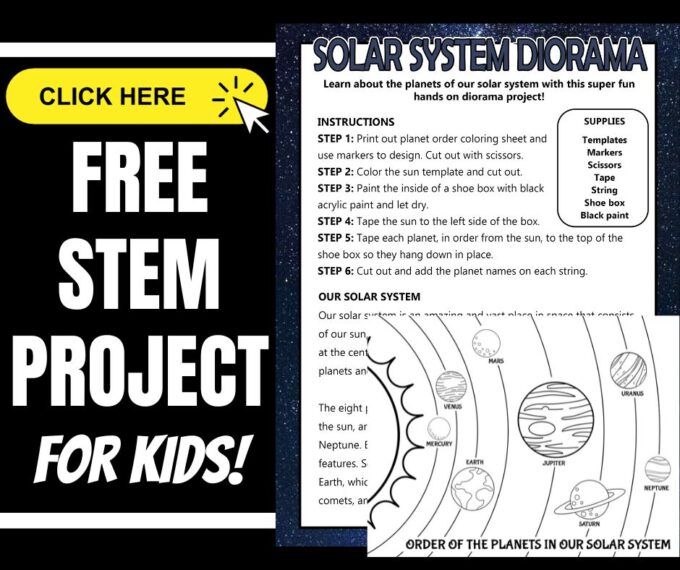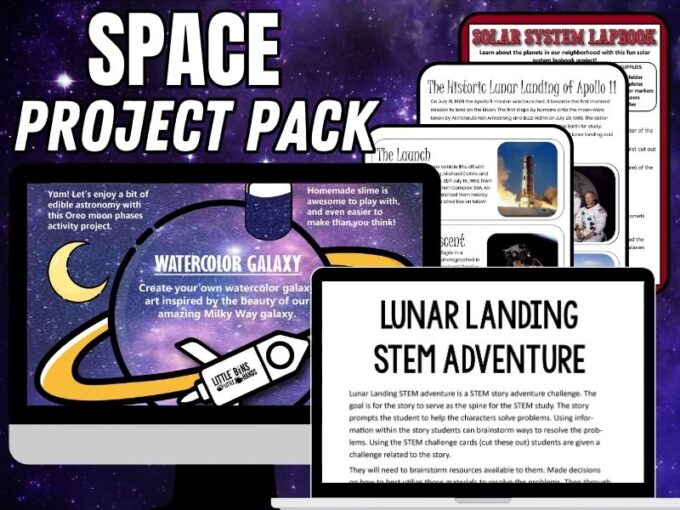Learn about the planets in our amazing solar system with this hands-on solar system project. Find out how to make a solar system model for a school project or for home. All you need are a few simple supplies to create your own solar system diorama, and our printable solar system template below. Check out more space activities for kids!
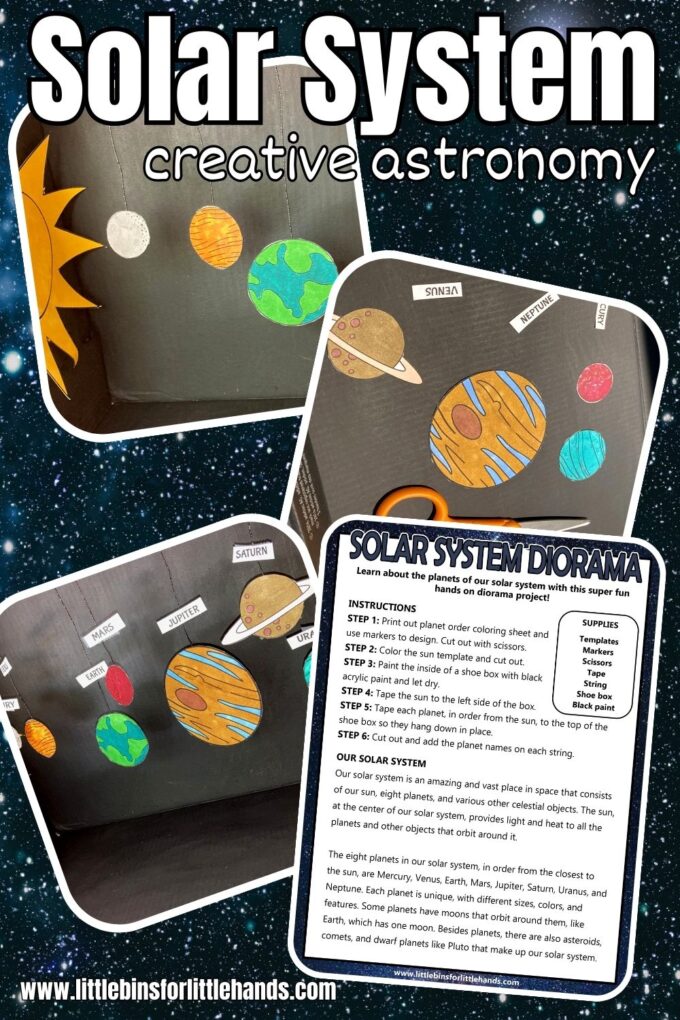
Make A Solar System Model For Earth Science
Astronomy is included under the branch of science known as Earth Science. It’s the study of the Earth and everything in the universe beyond the Earth’s atmosphere including the sun, moon, planets, stars, and much more. More areas of Earth Science include the following:
- Geology – the study of rocks and land.
- Oceanography – the study of oceans.
- Meteorology – the study of weather.
Learning about the solar system is an important part of the elementary and middle school curriculum. Not only is the solar system awe-inspiring and can spark a sense of wonder in children, but it also introduces the concepts of celestial bodies, gravity, orbits, and planets.
A solar system model is a great way to develop an understanding of the vastness of space and the scale of the solar system. It will help them grasp the concept of scale, distance, and the relative sizes of planets and celestial objects.
Kids will have a blast with this simple-to-set solar system model below, which explores the planets in our solar system in a hands-on way! Make sure to grab the printable solar system templates and project guide!
Get your free printable solar system project!
How To Make A Solar System Diorama
Supplies:
- Planet Templates
- Markers
- Scissors
- Tape
- String
- Shoe box
- Black paint
Instructions:
STEP 1: Print out the planet order coloring sheet and draw with markers. Then, cut out with scissors.
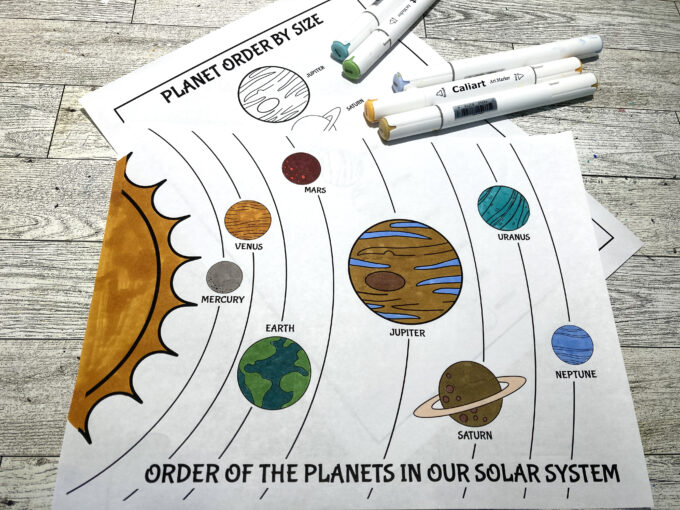
STEP 2: Color the sun template and cut out.
STEP 3: Paint the inside of a shoe box with black acrylic paint and let dry.
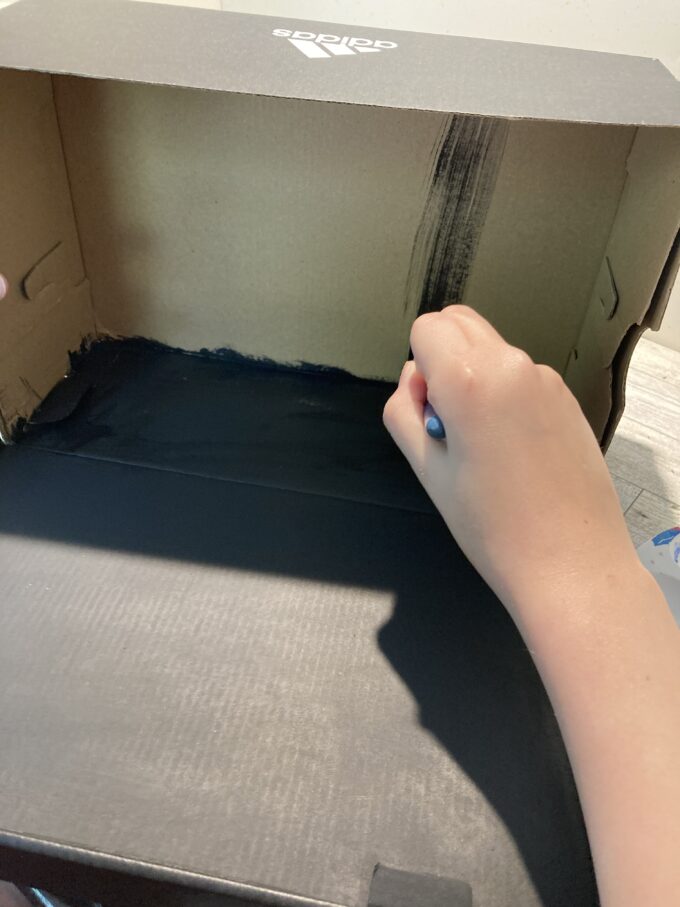
STEP 4: Tape the sun to the left side of the box.
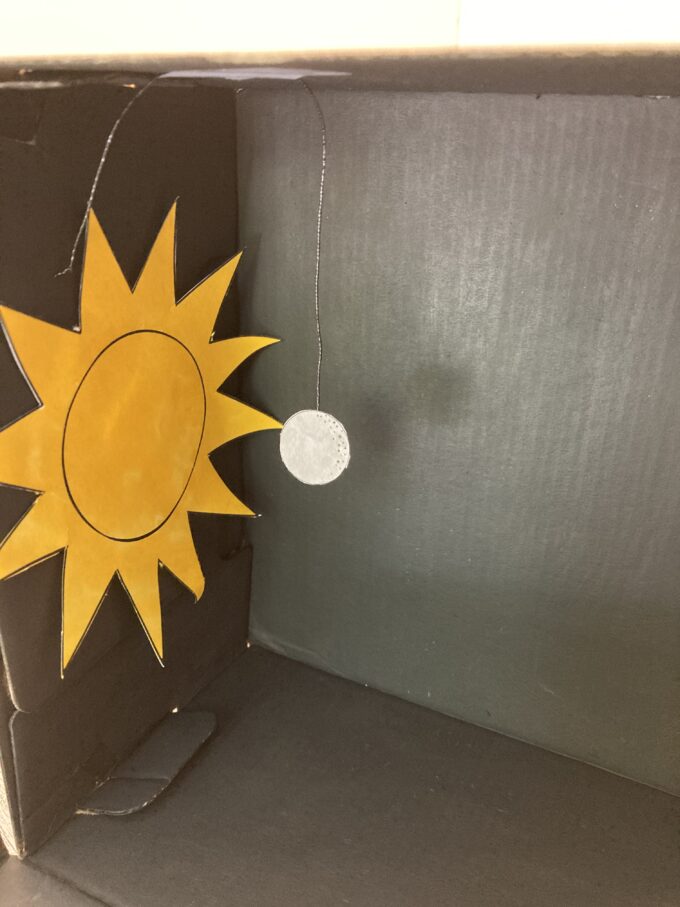
STEP 5: Tape each planet, in order from the sun, to the top of the shoe box so they hang down in place.
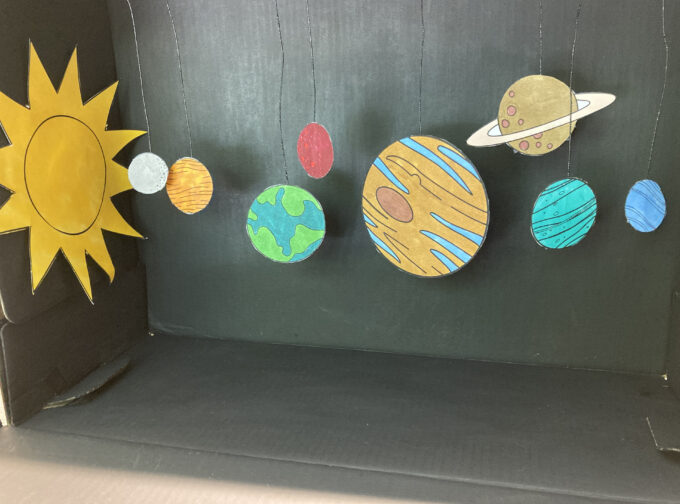
STEP 6: Cut out and add the planet names on each string.
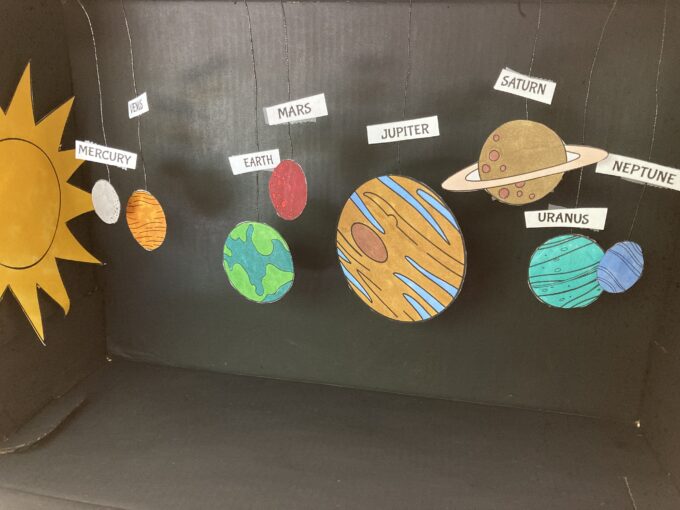
Our Solar System
Our solar system contains our star, the Sun, and everything orbiting around it by the pull of its gravity – the planets, dozens of moons, millions of comets, asteroids, and meteoroids.
The solar system itself is part of a huge system of stars and objects called the Milky Way galaxy. The Milky Way galaxy is just one of billions of galaxies that make up what we call the Universe.
There are many stars like ours with planets rotating them in the universe. We call it the “solar system” because our Sun is named Sol, from the Latin word for Sun. Solar systems can even have more than one star.
The Planets In The Solar System
In order from the closest to the sun, the eight planets in our solar system are Mercury, Venus, Earth, Mars, Jupiter, Saturn, Uranus, and Neptune. Each planet is unique, with different sizes, colors, and features.
Some planets have moons that orbit around them, like Earth, which has one moon. Our solar system also includes asteroids, comets, and dwarf planets like Pluto.
Fun Facts About The Planets
The planets in order from closest to the sun:
1. Mercury
- Mercury is the closest planet to the Sun.
- It has extreme temperatures, ranging from super-hot to super-cold.
- Mercury has no atmosphere, which means it has no weather and no air to breathe.
2. Venus
- Venus is sometimes called Earth’s “sister planet” because it’s similar in size and composition.
- It has a very thick and hot atmosphere, making it the hottest planet in our solar system with surface temperatures that can melt lead.
- Venus rotates in the opposite direction to most other planets.
3. Earth
- Earth is the only planet known to support life.
- It has various landscapes, from mountains to oceans and forests.
- Earth has a protective atmosphere that keeps us safe and provides the air we breathe.
- Earth’s moon, often called “the Moon,” is the fifth-largest natural satellite in the solar system. It plays a crucial role in Earth’s tides and stabilizing its axial tilt.
4. Mars
- Mars is often called the “Red Planet” because of its reddish appearance from iron oxide (rust) on its surface.
- It has the largest volcano in the solar system, called Olympus Mons.
- Scientists are interested in Mars because it might have had water in the past, making it a possible place for life.
5. Jupiter
- Jupiter is the largest planet in our solar system and is known for its giant red spot, a massive storm. This massive storm has been raging for at least 350 years and is larger than Earth.
- It has many moons, including Ganymede, which is the largest moon in the solar system.
- Jupiter is a gas giant, which means it doesn’t have a solid surface like Earth.
6. Saturn
- Saturn is famous for its beautiful ring system made of ice and rocks. These rings are incredibly thin relative to their size, measuring only about 30 feet (10 meters) thick.
- It has more than 80 moons, including Titan, which has a thick atmosphere and rivers of methane and ethane.
- Saturn is another gas giant with no solid surface.
7. Uranus
- Uranus is a unique planet because it rotates on its side, like it’s rolling along its orbit.
- It has a pale blue color and a very thin ring system.
- Uranus is an ice giant with a rocky core.
8. Neptune
- Neptune is the farthest known planet from the Sun in our solar system.
- It has the fastest winds in the solar system, reaching up to 1,500 miles per hour.
- Neptune’s blue color comes from the presence of methane in its atmosphere.
More Fun Space Activities For Kids
Pair this solar system project with one or more of these hands on space activities for kids. Here are more fun ways to learn about our solar system…
- Solar system lapbook project
- Edible oreo moon phases
- Make a moon craft to explore moon phases
- Build your own satellite
- Learn about constellations
- Create a DIY planetarium
- Build an Aquarius Reef Base model
- Make a lunar lander model
- View an eclipse with a DIY pinhole camera
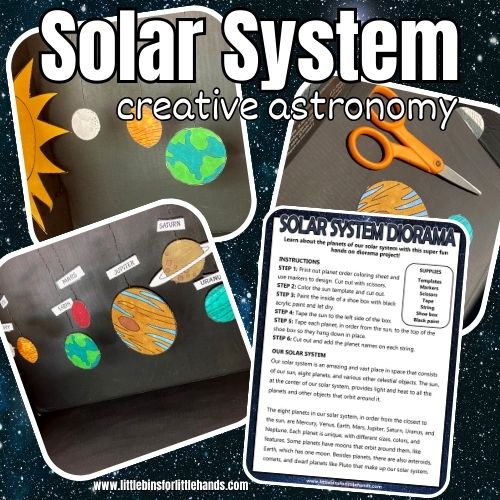
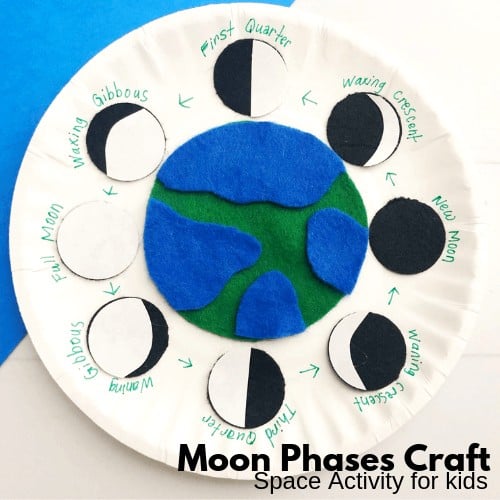
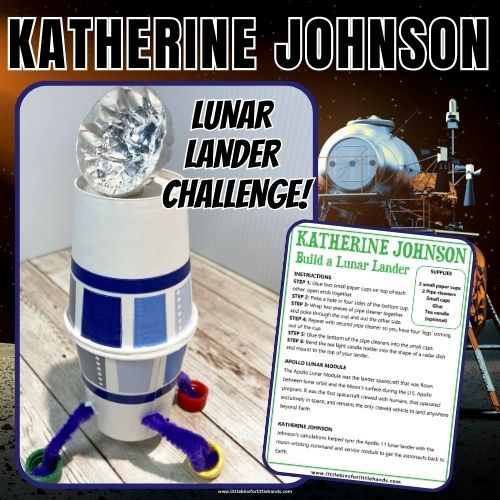
Printable Space Projects Pack
With 250+ pages of hands-on fun space themed fun, you can easily explore classic space themes with your kiddos including moon phases, constellations, the solar system, and of course the 1969 Apollo 11 lunar landing with Neil Armstrong.
⭐️ Activities include supply lists, instructions, and step-by-step pictures. Also Includes FULL Space Camp Week. ⭐️
Celebrate the 1969 lunar landing with easy-to-do activities at home, with groups, at camp, or in the classroom. Read up on this famous event and learn more about Neil Armstrong as well.
- Moon STEAM activities combine science, technology, engineering, art, and math with supply lists, set up and process photos, and science information. Craters, fizzy moon rocks, edible moon phases, watercolor galaxies, a DIY planetarium, bottle rocket, and so MUCH MORE!
- Printable Moon STEM challenges that are simple but engaging for home or classroom. Also included, is a Moon theme STEM Story with challenges perfect for going on a STEM adventure inside or outside!
- Moon phases & Constellation activities include charting moon phases, oreo moon phases, moon phases mini book, and more!
- Solar System activities include a solar system lapbook template and plenty of information to learn about the solar system and beyond!
- Moon extras include I-Spy, algorithm game, binary code project, 3D rocket building, thaumatropes, and MORE!


